Table of Contents
Organizing Your DATs
RomVault's DATRoot is where you keep your DATs and it outlines how you want your ROMs organized. The ROMRoot is the location where your ROMs will be stored on your filesystem. If you have a basic setup with a single DAT in each directory, your ROMRoot will mirror your DATRoot.
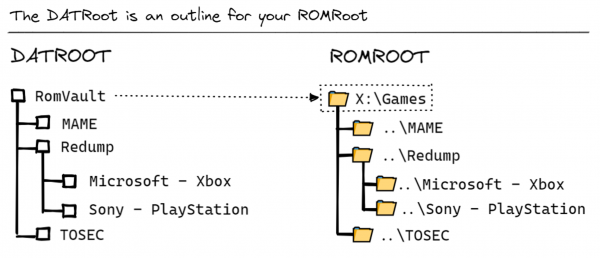
If you have different locations for certain ROM sets you can use Directory Rules to re-map certain directories in your DATRoot to an alternate location on your filesystem. It is very common for large collections to be stored across multiple drives or network locations. Any directories that are not re-mapped will fall under your ROMRoot directory.
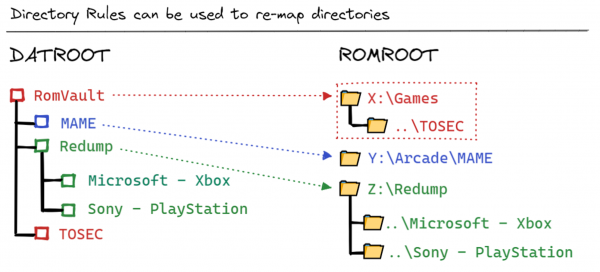
Depending on your preferred directory structure and naming conventions, there are a few approaches you can take to manage your DATs and address directory naming:
- Manual naming by placing a single DAT in each directory
- Automatic naming using the DAT's Name tag
- Automatic naming using the DAT's Description tag
These options are controlled by Directory Settings and you can mix different approaches for different parts of your DATRoot.
RomVault has a built in DAT downloader and updater service that can be used to keep your DATs current. For more information, please refer to the DATVault section.
Manual by placing a single DAT in each directory
If you place a single dat in a directory then RomVault will use that directory name for where to place your ROMs. This option is best if you want complete control over your directory structure and naming conventions. For example, if you want to rename systems or categorize by system type.
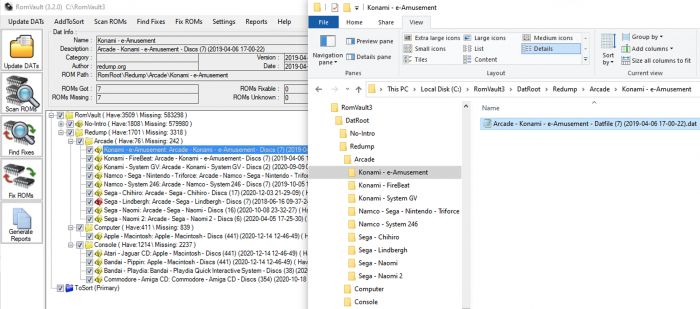
Automatic using the DAT's Name tag
RomVault will create folders for your ROMs automatically that match the Name tag in the header of each DAT. This is the most common option for most people, especially if you like to organize your ROMs by datting group like No-Intro, TOSEC, and Redump.

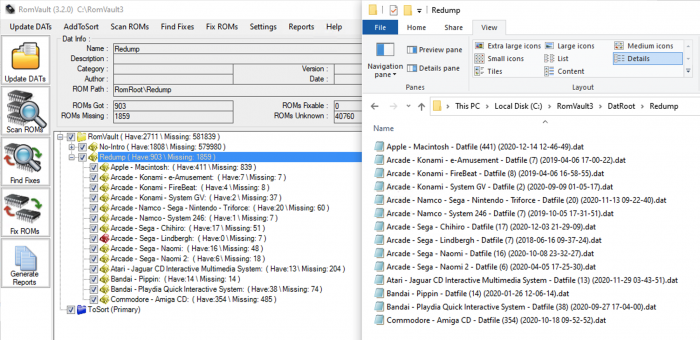
Automatic using the DAT's Description tag
RomVault will create folders for your ROMs automatically that match the Description tag in the header of each DAT. This option is not used very frequently because many DATs often have Description tags that contain set counts or dates that would cause your ROM directory name to change between DAT updates.

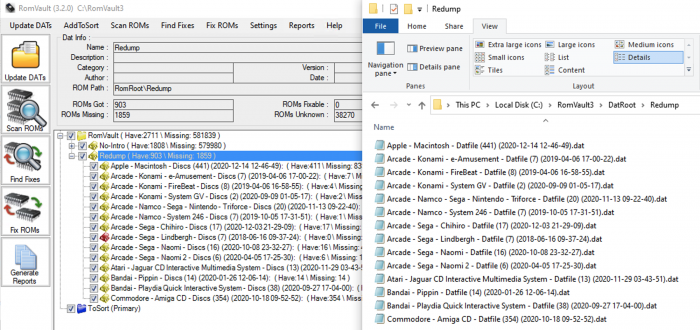
Merging multiple DATs in a single directory
Under normal circumstances each DAT is aligned to its own directory which is either manually or automatically named based on the options outlined above. In certain situations you may want to merge multiple DATs together in a single directory. This can be accomplished under these conditions:
- The DATs you wish to merge are present in the same directory in your DatRoot
- The DATs have no set name conflicts
- The directory rule for the DATs has “Don't auto-add DAT directories” enabled
If the appropriate conditions are met, the merged DATs will a appear with a smaller font in the tree. If there is a set name conflict then you will get a DAT merge warning when you apply the directory rule or update DATs.
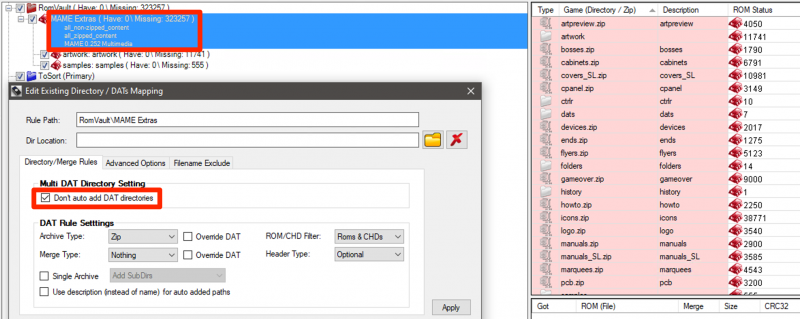
Only directories with a DAT will display in the tree. If your preferred organization setup requires ignoring a directory in your RomRoot, then you can use a placeholder DAT to make that directory appear in the tree which you can deselect or lock. The placeholder DAT only needs to contain this: <?xml version=“1.0”?><datafile/>